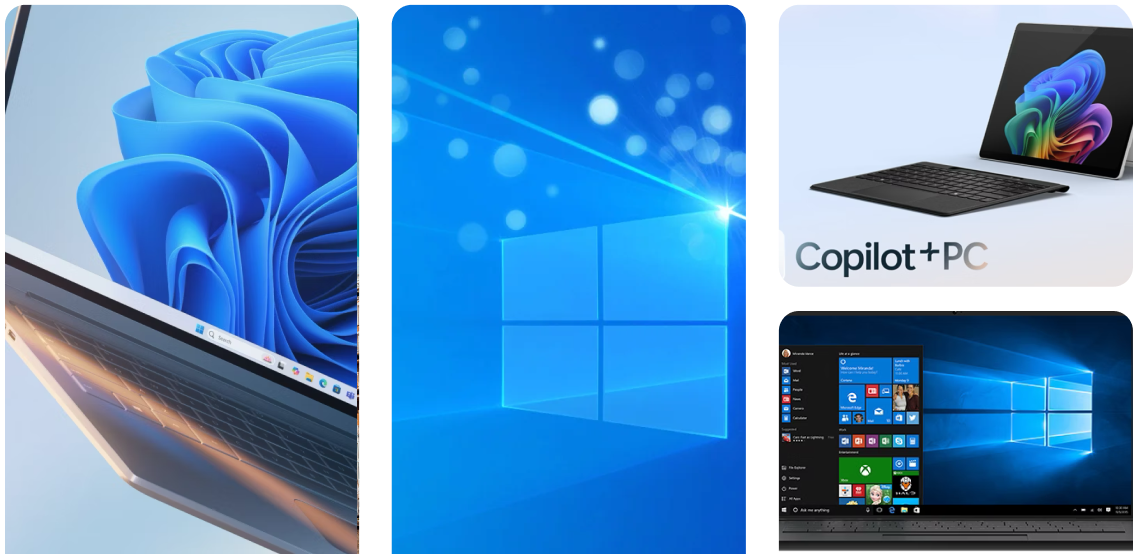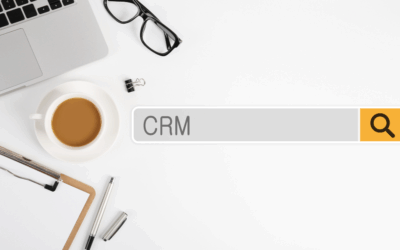Microsoft has set October 14, 2025, as the official end-of-support date for Windows 10, leaving many users wondering: Should I upgrade to Windows 11 now or wait? Windows 11 brings a refreshed interface, improved security, and AI-powered features, but is it worth making the switch? Let’s compare Windows 11 to Windows 10 and explore whether upgrading is the right move for you.
Windows 11 VS Windows 10
Design & User Interface
Windows 11 introduces a more modern and visually polished interface, while Windows 10 retains the classic look that many users are familiar with.
- Start Menu & Taskbar: Windows 11 centers the Start menu and taskbar by default, removing live tiles in favor of a simpler, cleaner layout. Windows 10 keeps the left-aligned Start menu with live tiles, offering more customization.
- Snap Layouts vs. Basic Window Snapping: Windows 11 includes Snap Layouts, making it easier to organize multiple windows. Windows 10 allows for basic snapping, but lacks the intelligent layout suggestions of Windows 11.
- Widgets: Windows 11 has a dedicated Widgets panel for news, calendar, and weather. In contrast, Windows 10 relies on Live Tiles within the Start menu, which are being phased out.
Security Enhancements
Security is one of the biggest reasons to upgrade, though Windows 10 will continue receiving updates until October 2025.
- Built-in Security Features: Windows 11 includes Virtualization-Based Security (VBS) and Secured-core PC features by default, making it more resistant to malware and cyberattacks. In Windows 10, these features exist but are not always enabled.
- End of Support for Windows 10: After October 14, 2025, Windows 10 will no longer receive security updates, making it more vulnerable to cyber threats.
AI Integration
Windows 11 includes AI-powered features, while Windows 10 does not.
- AI-Powered Search: Windows 11 delivers faster, smarter search results, whereas Windows 10’s search can feel slower and less intuitive.
- Voice & Productivity AI: Windows 11 introduces real-time captions, voice typing, and smart suggestions, making workflows more efficient.
- Microsoft Copilot Integration: Windows 11 comes with Microsoft Copilot, an AI assistant that helps automate tasks and provide recommendations.
Performance & Gaming
Windows 11 improves gaming and multitasking performance, but Windows 10 still performs well on older systems.
- Boot Times & System Efficiency: Windows 11 boots faster and manages resources more efficiently. Older hardware running Windows 10 may feel slower over time due to less optimization.
- Gaming Performance: Windows 11 supports DirectStorage (faster load times) and Auto HDR (better visuals). Windows 10 lacks DirectStorage support, meaning games may load slower on the same hardware.
- Compatibility with Older Hardware: Windows 10 runs on a wider range of devices, while Windows 11 has stricter hardware requirements, including TPM 2.0 and newer processors.
Windows 11 for Business
For businesses, upgrading to Windows 11 is kind of mandatory I’d say. Once Windows 10 support ends, businesses will no longer receive security updates, making them vulnerable to cyber threats, compliance issues, and outdated software.
- Stronger security – Windows 11 has better built-in protections to keep business data safe.
- Better productivity – Integrated Microsoft Teams, improved multitasking, and AI-powered search help employees work efficiently.
- Simplified IT management – Windows 11 is built for modern business needs, making device management, updates, and remote support easier.
- Optimized for newer hardware – Designed to take full advantage of modern processors and better power efficiency.
- Future-proofing – Avoid security risks and ensure long-term software compatibility.
Cons: Windows 11 Bugs & Potential Issues
Upgrading to Windows 11 has its benefits, but there are potential downsides to consider.
Hardware Compatibility For Windows 11
Windows 11 has strict system requirements. It only supports Intel 8th Gen (2017) or newer and AMD Ryzen 2000 series (2018) or newer. It also requires TPM 2.0, which many older PCs lack.
Even if a 2017-2019 PC meets the requirements, some users have reported slower boot times and lag when multitasking. If Windows 10 runs smoothly on your device, upgrading may not feel like an improvement.
Software Compatibility For Windows 11
Some older business applications and peripherals may not work well on Windows 11. It’s important to check compatibility before upgrading.
Frequent Updates and Bugs
Windows 11 receives regular updates, which can introduce unexpected issues. Some users have experienced Wi-Fi dropouts, lag, and file explorer problems after updates. Businesses may need to spend extra time managing updates and troubleshooting issues.
What Are the System Requirements for Windows 11?
To upgrade, your PC must meet these requirements:
- Compatible CPU – Intel 8th Gen (2017) or newer, AMD Ryzen 2000 (2018) or newer
- TPM 2.0 – Required for security features
- UEFI Firmware with Secure Boot
- 4GB RAM (8GB+ recommended) and 64GB storage
How to Check Compatibility for Windows 11
To see if your CPU is compatible, use Microsoft’s PC Health Check tool. For TPM 2.0, type tpm.msc in the Windows search bar to check if it’s enabled.
What is the Upgrade Process for Windows 10 Users?
If your device is eligible, you can upgrade for free through Windows Update or using the Windows 11 Installation Assistant from Microsoft. If your PC doesn’t meet the requirements, you may need to upgrade your hardware or continue using Windows 10.
As an IT service provider, we help businesses assess compatibility, prepare systems, and upgrade to Windows 11 without issues. If you’re unsure whether your IT setup is ready, we can handle the transition smoothly and securely.
I’ll be publishing a dedicated article about “How to initiate the free upgrade from Windows 10 to Windows 11”, with a deeper look at compatibility, system requirements, and upgrade steps—so stay tuned if you plan to handle the upgrade on your own!
What Happens if You Don’t Update Windows 11 to Windows 10 by October 2025?
Windows 10 will officially reach the end of support on October 14, 2025. This doesn’t mean your PC will stop working, but it does come with some serious risks.
What Does Windows 10 End-of-Life Mean for Users?
After October 2025, Microsoft will no longer provide security updates, bug fixes, or technical support for Windows 10. While you can continue using it, your system will become more vulnerable to security threats over time.
What Security Updates Will No Longer Be Available?
Without regular updates, Windows 10 will no longer receive:
- Security patches for new malware, ransomware, and cyber threats
- Bug fixes to prevent system crashes and performance issues
- Support for newer software and hardware
Over time, major apps and services may also stop supporting Windows 10, making it harder to run the latest software securely. Businesses, in particular, face increased risks, as running an outdated OS can lead to compliance issues, data breaches, and compatibility problems.
If you’re unsure about your options, we can help businesses transition to Windows 11 smoothly and securely to avoid these risks.
Final Thoughts: Should You Upgrade to Windows 11?
For businesses, upgrading to Windows 11 is necessary. Once Windows 10 support ends, there will be no more security updates, leading to compliance risks and outdated software. If your company relies on secure and reliable IT, planning the transition now will help avoid last-minute issues.
For individual users, if your PC is too old to upgrade, you can continue using Windows 10, but be aware that security risks will grow, and some apps may stop working properly. If possible, plan to upgrade your device within the next couple of years.
If you’re unsure where to start, I can help you check compatibility, upgrade your systems, and make the transition to Windows 11 smooth and hassle-free. Contact CloudConnected today and ask for me, Judith, to get started.




